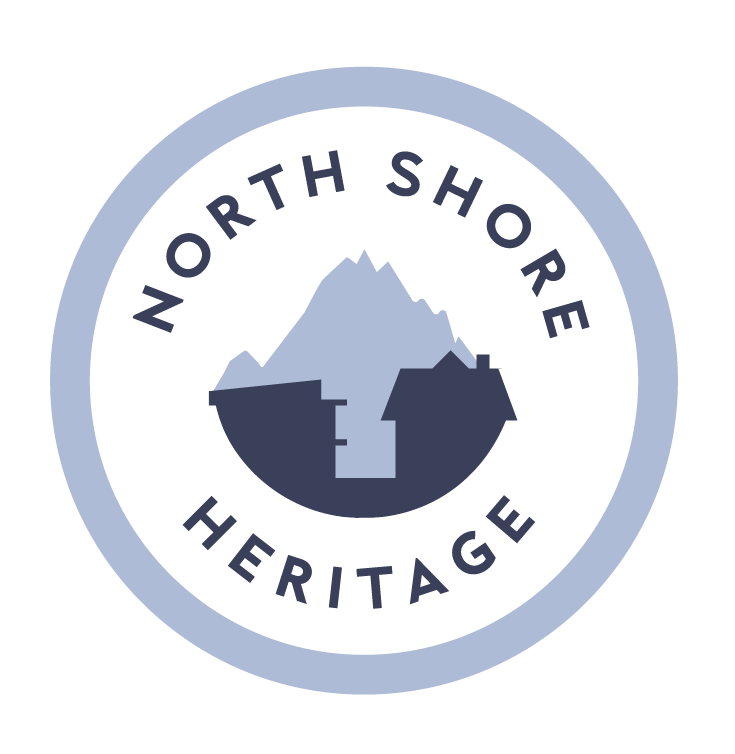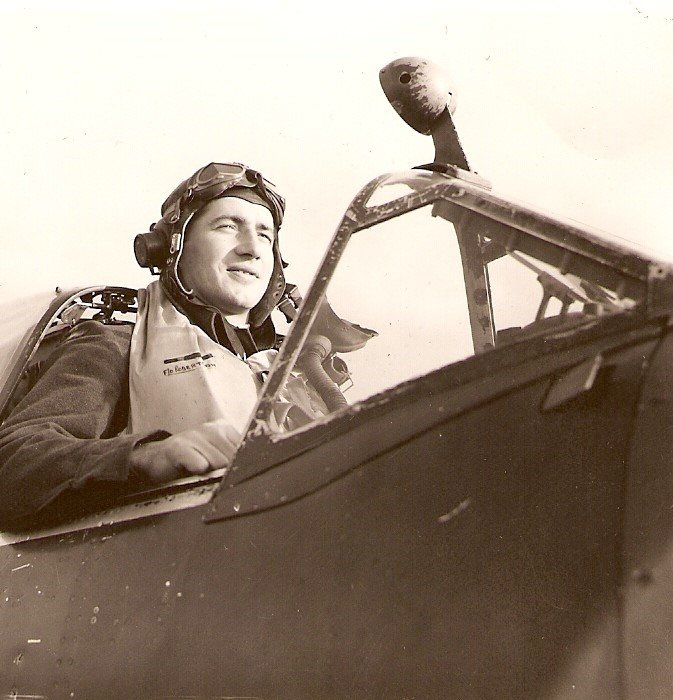Arthur and George Coles were flying Spitfires and Lancaster bombers for the Allied war effort when tragedy struck for the North Vancouver based brothers. Reported as missing in action in the latter part of 1943, one brother returned home after the war whilst the other, sadly, did not. Eighty years on, our Remembrance Day tribute offers thanks for their service.
Art Coles in 1943. Courtesy of the Coles family.
Chance dictated that the brothers were from Canada. Their father, Charles Petley Coles (‘CP’) was born in England in 1873, migrating as a young man to California. Family records indicate that he experienced the great San Francisco earthquake of 1906, helping to put out the fires during an event that destroyed over 80% of the city.
Disaster was to reoccur when CP’s wife and their firstborn child died in childbirth. It was the beginning of what was to be a lifelong struggle with sadness.
CP’s second wife, Anna McGillivray Campbell was from the USA. They met by chance. She was on her way to Hawaii to take up a teaching post, he was on board the same boat, travelling on business. After corresponding for a year, they married in 1909.
In 1912, the burgeoning family (now with two sons, Charles and Don) relocated to Canada. CP set up a grain brokerage in downtown Vancouver whilst residing at East First Street in North Vancouver. As noted in the history annals, CP is responsible for arranging the first export of wheat by sea from Vancouver rather than using the traditional inland route east by rail.
Business must have been profitable. In 1920, CP moved to a substantial craftsman house in Upper Lonsdale, by which time he and Anna’s family had grown to five: four boys (Don, George, Bruce and Arthur) and a girl (Edith).
The path of loss for the Coles family had continued, however. A matter of weeks after the birth of Arthur, their youngest son in 1917, their eldest, Charles Campbell Coles, had died of scarlet fever.
Coles family home at 299 East Kings Road, North Vancouver in the 1920s. Courtesy of the Coles family. Built in 1914, this imposing Craftsman was originally known as Davidson House after its first occupant, George Murdock Davidson. The Coles family were the second occupants with a tenure of 22 years (1920-1942).
The Davidson Residence, 299 East Kings, North Vancouver, November 2023. Photo courtesy of Jennifer Clay.
Daughters Louise, born in 1922 and Alice, born in 1924 completed the family. The girls attended North Star Elementary school. Art and his surviving brothers (Don, George and Bruce) walked up the road to Kingsley, a private school at Thomas Nye’s mansion in Carisbrooke Road (now re-addressed as 3545 Dowsley Court). Nye had built in 1912 what was locally regarded as his “folly”, going bankrupt in the process. Kingsley School leased the house between 1921 and 1932, before relocating around the corner to St Mary’s Avenue.
Coles family in the 1920s. CP and Anna with (from top to bottom) Donald, George, Bruce, Art and Louise, Edith, Alice. Courtesy of the Coles family.
Edith, Louise and Art Coles at East Kings Road, North Vancouver in 1920s. Courtesy of the Coles family.
Climbing slopes became a rite of passage. CP’s interest in skiing was taken up by his boys, who took every opportunity to walk up Grouse Mountain. Art, in particular, showed a flair for the sport and clearly a relish for speed, given what was to unfold.
Sadly, in 1937 the history of family loss was to continue. Aged 55, CP’s wife Anna passed away, a result of cancer. In order to “hide from life” as his granddaughter Judy (Coles) Mordy surmises, CP moved away. Within 5 years he had sold their home at 299 East Kings Road.
The period leading up to the second world war was one of change. To maximise his chances, Art quit his position at Aetna Life Insurance and trained in Alberta with Peter Vajda, a top ski coach. Art’s prowess at skiing quickly earned him the moniker “the Vancouver Thunderbolt”, winning multiple slalom and downhill ski competitions in 1940, including the Canadian national championships (the Dominion).
Art Coles winning the Dominion Slalom, Banff 1940. Public domain.
Such were the heights of his achievement that a movie was made entitled “Wings To Your Heels”, which included footage of he and Gertie Wepsala, the Canadian women’s ski champion, flying down the slopes. Both Art and Gertie were members of Grouse Mountain’s Tyee Ski Runners club and were on track to represent Canada in the 1940 Winter Olympics.
Advertisement in the Toronto Star, 10th February 1941. Courtesy, newspapers.com
Their star-studded trajectory was interrupted. War in Europe meant the Olympics, which were due to take place in Garmisch-Partenkirchen, Germany, were cancelled. Art joined the Royal Canadian Air Force (RCAF) in June 1940 and, after a period of training, worked as a flying instructor in Trent, Ontario and Moncton, New Brunswick.
He transferred to Britain in 1942, flying Spitfires with 412 Squadron. George, his elder brother was already there, operating as the bomb aimer on Lancaster bombers with 617 Squadron.
617 Squadron (Dambusters) at Scampton, Lincolnshire, England July 21st 1943. Pilot Officer George Coles is third from right. Courtesy of Imperial War Museum, England.
George did not participate in the famous “Dambusters” raid of May 1943 when the squadron attacked Germany’s Mohne and Edensee dams. Some of his aircraft’s six-person crew were ill. He did fly the night of 16th September 1943, however, when the Lancasters hit the Dortmund-Ems Canal. Five of the eight bomber aircraft that night did not return. Posted as missing in action, it was subsequently discovered that George’s plane had been downed by flak near the canal with all on board perishing.
The blow was bitter for the Coles family and the terrible news was to continue. Dispatches posted in early October 1943 revealed that Art had successfully downed two Focke-Wulf 109 fighter planes during a sortie. His luck was to change. After 32 successful operational flights with the squadron, he was flying over Ypres, France at the end of November 1943 when his Spitfire was hit, descending in a plume of smoke.
Missing in action, news arrived in January 1944 that Art had miraculously lived through the crash, but had been taken prisoner by the Germans near Vermes, Belgium.
A postcard dated January 24th 1943 sent by Art to his ski buddy, Gertie confirms that he is alive and well, with some rather cryptic language describing his ordeal.
Postcard, courtesy of MONOVA archives.
Postcard, courtesy of MONOVA archives.
He would remain a POW for the rest of the war, surviving the hardship of three German camps in Frankfurt, Stalag Luft III, and Luckenwalde, near Berlin.
Stalag Luft III, near Zagan, Poland is the site of the infamous “Great Escape” established in folklore by the 1963 movie. On the night of March 24th 1944, 76 airmen from Britain and other Allied countries crawled through a tunnel beneath the camp’s perimeter fence. A number of Canadian pilots were involved in the digging and preparation, although Art was located in a separate part of the camp so is unlikely to have been involved. His daughter, Judy has in her possession a piece of chocolate wrapper from a Red Cross package upon which her father wrote some ideas for escape. In hindsight, he was lucky not to have made an attempt. The majority of the 76 who did during the mass escape were recaptured, with 50 subsequently killed by the Gestapo at Hitler’s instruction.
Art lived through the war, even surviving in February 1945 a gruelling two-week march under guard, followed by an enforced rail journey squashed into box carriages. Finally released in May 1945, the incarcerated airman was reported as being safe in England by June.
A return to Canada shortly afterwards precipitated a marriage to his sweetheart, Jean whom Art had first encountered whilst working at RCAF Moncton. However, settling back into civilian life was no easy task. By all accounts, Art did not speak much about his time in the war. Details of his imprisonment emerged only later when he made an application to the War Claims Commission. A reply to his claim dated 1954 indicates that he received a sum of $225.40 in compensation, equivalent to $2,932 in today’s money, a meagre amount given the sacrifice he made. One enduring legacy of his ordeal, as his daughter, Judy recalls, was that he couldn’t bear the sight of food wasted, no doubt a consequence of the hunger he had experienced in the camps.
Art and Jean lived temporarily with his brother in West Vancouver. Art’s flyer placed in the Vancouver Daily Province in November 1945 points to the difficulties he and his wife were facing. It is an irony that the shortage of accommodation appears not dissimilar to that which many are experiencing in present times.
Extract from Vancouver Daily Province dated 8th November 1945. Courtesy, newspapers.com
Having sold up at 299 East Kings Road in 1942, Art’s father, CP survived the war years before dying in 1947 aged 73. By all accounts, he appears to have been a considerate and thoughtful man who did his best for his family.
Art, CP’s youngest son, made it through the war, but died young. The former Spitfire Ace was surveying fire damage in the forests north of Chapleau, Ontario when the Bell Hawk helicopter he was piloting crashed. A faulty part was determined as the cause. It was June 1955. He was 37.
Art Coles in 1943, courtesy of the Coles family.
80 years after the events of 1943, we give thanks to the heroism of Art and George Coles, the wartime flying brothers from North Vancouver.
Except where indicated, text and images Copyright @ North Shore Heritage and Paul Haston. All rights reserved. Republication in whole or in part is prohibited without the written consent of the copyright holder. This includes, particularly, all images reproduced here courtesy of the Coles family.
References:
British Columbia City Directories 1860-1955, https://bccd.vpl.ca/












